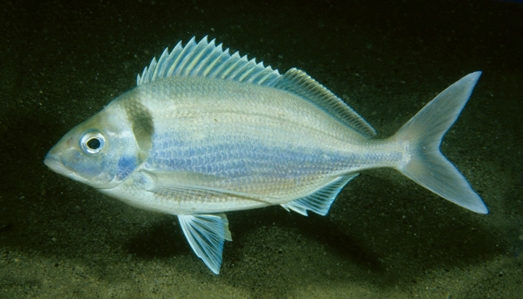General Description
Body oval, compressed, with a slender tail base, thick lips, and pectoral fins with thickened lower rays, the uppermost thickened ray noticeably extended. Silver with broad black crescent-shaped band on back of head. To 70 cm.
Biology
This species is occasionally seen foraging on rocky reefs and in sandy areas of Port Phillip Bay in Victoria, although it more commonly forms large schools in deeper coastal waters. It is commercially important.
Habitat
Rocky reefs and exposed sandy and silty areas in bays and coastal waters, in depths of 0-400 m.
Reefs
Soft substrates
Distribution guide
New Zealand and southern Australia.
Species Group
Depth
Shore (0-1 m)
Shallow (1-30 m)
Deep ( > 30 m)
Water Column
Max Size
70 cm
Commercial Species
Yes
Global Dispersal
Recorded in Australia
Conservation Status
- DSE Advisory List : Not listed
- EPBC Act 1999 : Not listed
- IUCN Red List : Not listed





